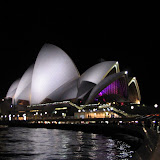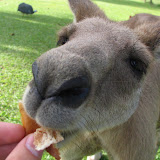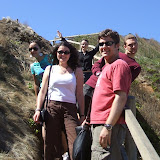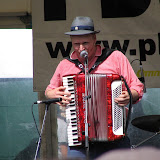THE PLAN had been to either check out the
Great Barrier Reef or
New Zealand for Easter break. But I had been offered a tour of NZ by a Kiwi friend at the end of the semester, and my break was only a week—not long enough to really explore a new country.
Some other friends were originally looking at the reef—the two French girls, the German couple, this American girl—but plans fell through when push came to shove, and France stayed in Melbourne to save money, while Germany went westward to Perth. America did go to the reef, but her boyfriend was meeting her there. “We’re not like one of THOSE couples,” she promised, though she later admitted “He’s the ONE!” I discreetly gagged and told her I’d see her when she returned to Melbourne.
So it was that only two weeks before break I planned my unintentionally solo trip to Cairns, one of the popular hubs to access the Reef. The trip actually wasn’t bad at all, and I met some good people.


Cairns has pretty much tried to become what tourists expect for a small city that straddles two natural wonders—the Reef and the Daintree Rain Forest—plenty of hotels, hostels, dining for every budget, and every other shop sells postcards or is a “tourist information centre,” usually affiliated with some tour companies. It's located pretty far north on Australia's east coast, so tourists expect a bright sun and white snady beaches. The sun’s bright enough, but underneath the imported sand you’ll find mudflats. So Cairns also installed a “lagoon,” or “big fancy swimming pool,” where lifeguards are on duty from dawn to dusk and anyone can swim for free. My travel book told me there were supposed to be topless bathers there, but I was disappointed.
My first three days were spent on the reef with other snorkelers and divers. I had passed up the chance to take a 4-5 day scuba certification course because it would have involved two days in a pool before I got out to the open water, and I only had 8 days in Cairns. This was a bit of a mistake, as guided introductory dives are expensive, and scuba certification lasts a lifetime. Something to remember if you find yourself at the Reef.
Anyway, I found scuba to be pretty lame, considering dives tended to last only a half hour, while I was allowed to snorkel for an hour at a time. Also, I saw the exact same stuff snorkeling as diving, and the colors of the reef were much more apparent in shallower waters where the sun could penetrate. When you dive you're supposed to conserve your air supply and move around slowly--you also don't want nitrogen to boil out of your blood, another reason for limiting your vertical motion. By snorkeling I could dart around as much as I wished, chase sharks, and dive under my own air as fast as I wanted. Finally, flippers are cool because they let the weakest people (me) pretend they can swim butterfly. After a day I was convinced that scuba diving is just the couch potato’s snorkeling, and my opinion hasn’t changed.
I didn’t bother renting an underwater camera, because I did the next best thing and bought 300 digital diving pics for $10. The pictures below are a pretty adequate representation of what I saw.

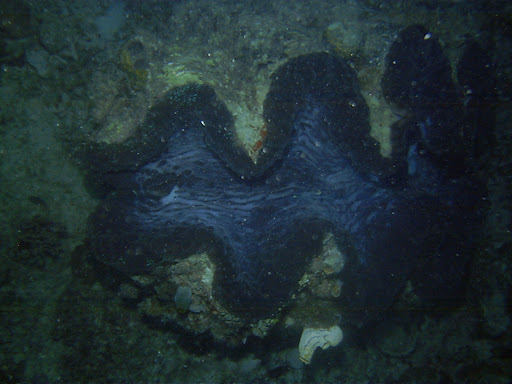
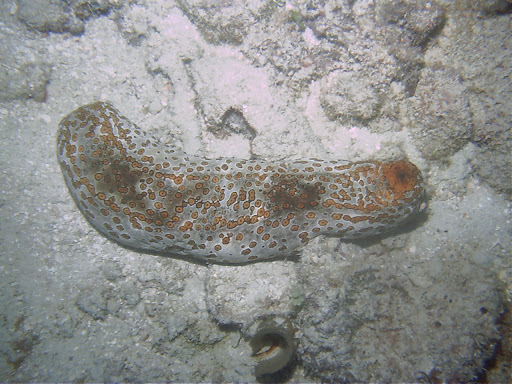

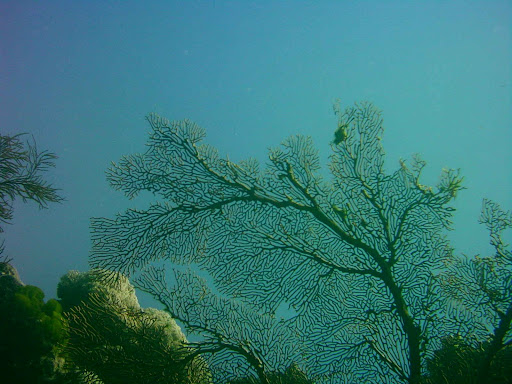
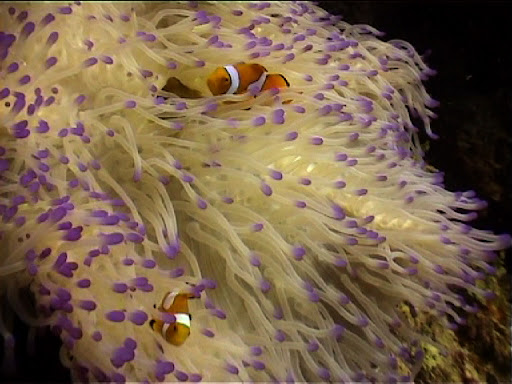


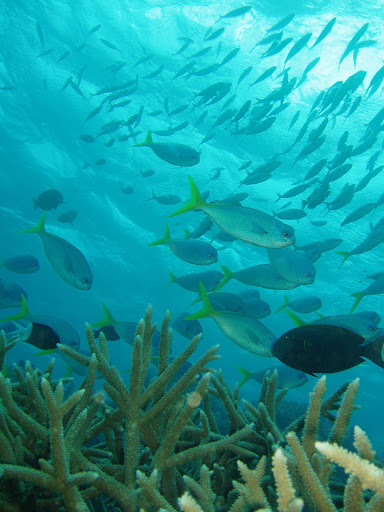

Lots of different corals, anemones, 3 sharks, 3 stingrays, a couple turtles, giant clams (second picture), sea cucumbers (third picture. This animal regurgitates its organs if it feels threatened and breathes through its anus. And you thought your breath was bad), and lots of small fish. According to the convenient labels on these pics, most of the fish I saw were broadstripe fusiliers (first pic), false clownfish (sixth pic), parrotfish (seventh), moorish idols (eighth), and yellow tail fusiliers (ninth), among some others.
I had to include the sepia turtle picture, because it turns out that the color of underwater shots are pretty arbitrary. Most of your pictures will look blue-green. One person told me he adds more red to his pictures, another guy just lets Picasa alter the colors. This is supposed to bring out the “natural colors,” which of course you don’t see naturally. Whenever you see a postcard or inviting picture of the Reef, you can bet your behind that the colors have been intensified to look more inviting. They aren’t completely misleading, but you’d only be able to see such beautiful colors at very shallow depths and with great water visibility. Personally I think the shark and giant clam pics are the closest approximations to the colors I saw on the reef, at depths of three to twenty-five feet, and visibility from four to ten feet.
Some reef highlights: three friends from Hong Kong, two chiropractors from Seattle who had just sold their practice and were taking a year off for travel, an alleged Chief Financial Officer from Denver who would speak around a mouth full of food, an alleged law firm owner who sported bangs and spoke grammatically incorrect English... and the sort of games that twenty year olds can contrive using only four decks of cards, a dozen spoons, and two bananas.
Then two days in a rental car with a German, Marco, I met while diving. Germans are everywhere in Australia. Over in Germany I bet the social security system is collapsing, because all the twenty year olds that should be working or studying are abroad in Australia. There are probably more Germans than sheep here, and that's saying something. Anyway, Marco and I got along well enough, and being social for two days saved me $100 for the car.
First day we checked out the sites to the south and east of Cairns, which includes a bunch of waterfalls, a cheese factory (we didn't make it), Innisfail, Mission Beach, a crocodile farm, and other things. Millaa millaa falls weren't that large but were still stunning. They would look good in Ithaca.




Crocodile farms are located throughout the wetter parts of Australia, and probably owe much of their popularity to Paul Hogan, Steve Irwin, and Steve Irwin's infant children, whom he dangled in front of crocs like Michael Jackson did with his kids off that balcony. I don't mean to say that all crocs are pure evil, but most of them are, and it looks like this little one will be, too.

If I had more presence of mind, I would have taken a video of one of the newer adult crocs. Many crocs are captured and sent to farms if they show aggressive behavior to humans. The owner of this farm caught a 16 footer about thirty years ago that was responsible for the deaths of 45 to 50 full grown cattle. No joke. He's been named "Gregory," and the owner will lie on Gregory's back at the slightest provocation. If you ask the owner why one of his legs has two noticeable scars, he'll tell you that the smaller one is from Gregory (he was laying on him with his legs within biting distance, which the owner now admits was "a bit foolish"), and the larger one is from his doctor.
I did manage to take a clip of an incredibly well-trained croc, Graham. While most crocs will lie perfectly still while they're contemplating killing something, when they've made up their mind they can move pretty quickly. Graham, meanwhile, moves like an old dog.
Also on the farm were cassowaries, huge flightless birds related to emus and African ostriches. They're kind of like great grandparents, because they have a plate in their head, they're endangered, and they have incredibly wrinkly necks.

They also had roos, peacocks, snakes, lizards, and the like. But never let an Australian crocodile farmer to make you into "A Real Australian Man," because this involves putting a python down your pants and having "A Real Australian Lady," in my case a nice British girl named Jenny, fish it out for you. Marco and I were still cracking jokes about this long after we left the farm. Then I realized that a crazy, pudgy, sixty year old Australian farmer had been able to convince a girl to get into my pants much, much faster than I would have been able to alone. I mentioned this to Marco and we drove on in silence, contemplating some of life's injustices.

Then onto Mission Beach, which looked amazing, but my camera was dying, so this is one of the only pictures. Imagine a very long and slowly curving beach with mountains behind and islands in front, with a rainforest coming right up to the perfectly soft sand.

The next day we decided we wanted to spend less time in the car, so we went North from Cairns up to Port Douglas, which has many great beaches where you can usually swim, or in our case, just look at the water. The "stinger" (jellyfish) nets had been removed on account of the strong wind, which meant the water was probably writhing with stingers and saltwater crocs. Sharks too.
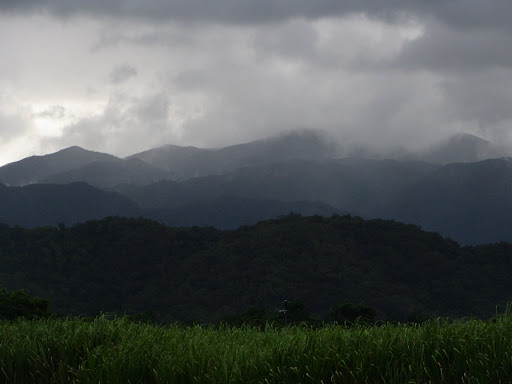

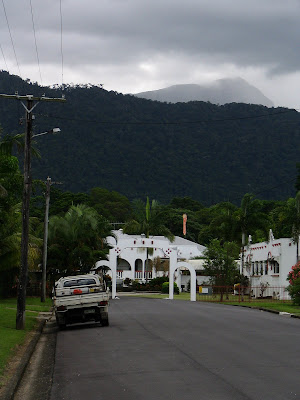
Spent the afternoon at Mossman Gorge, another natural wonder that belongs in Ithaca. There were some amazing mountains on the way there.
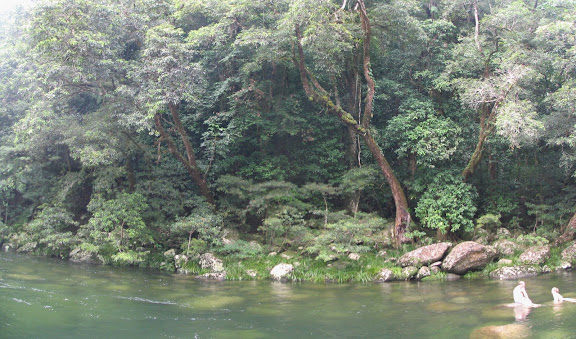
To wrap this up, also spent some time in the
Daintree Rainforest, really an amazing place, World Heritage Area, etc. This forest has been pretty much unchanged since Australia was part of the supercontinent Gondwana about a million bijillion years ago. I wished Jake Barnett, my fanatical biology friend, was with me to explain everything. As it was, all the info went in one ear and out the other. I think these pictures feature the Hercules moth, world's biggest, Boyd's forest dragon (the lizard), mangrove trees, the Daintree River, and the sort of vines Tarzan would have swung on, among others.

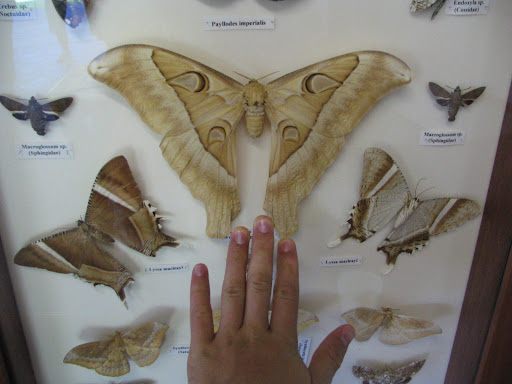

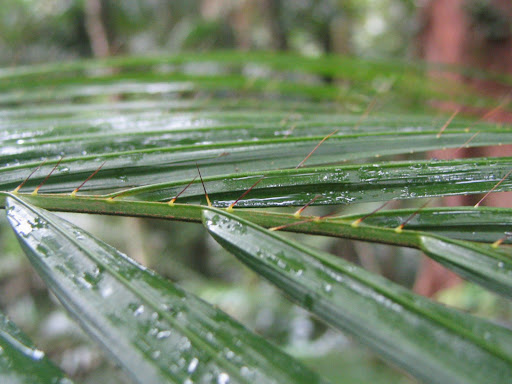




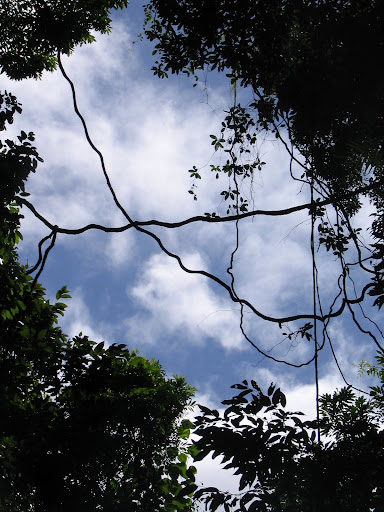
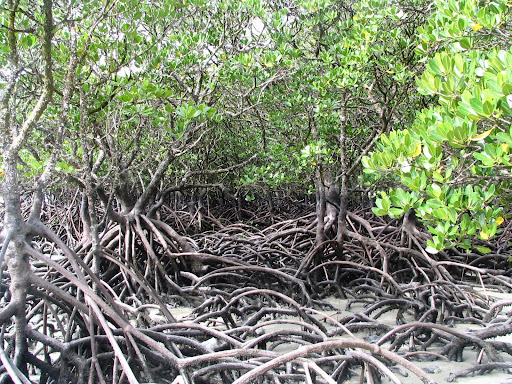
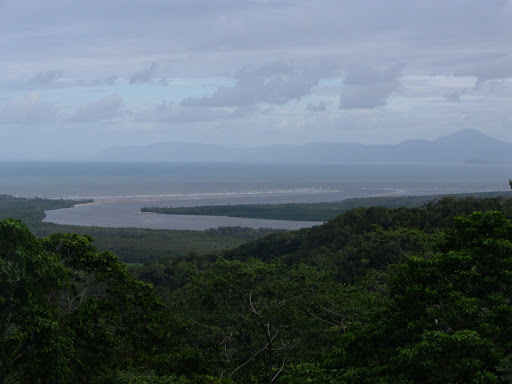
Then one last day in Cairns on Fitzroy island, to do some more hiking and snorkelling.


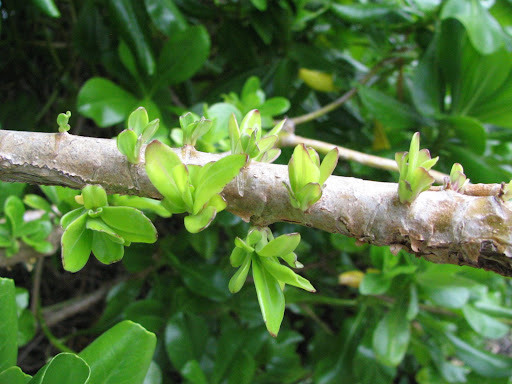

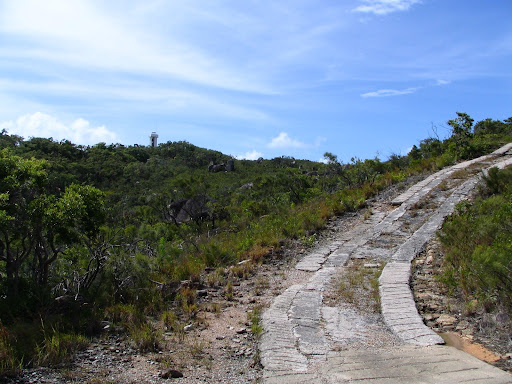
That's all, folks! Back in Melbourne.

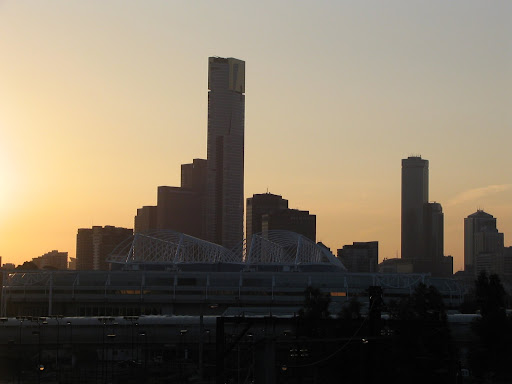 Though it's smaller than Sydney by half a million--3.7 million residents here--Melbourne is the place to go in Australia for music, cuisine, art, sports, and just about anything good. Sydney has some beautiful harbors, and apparently there's an opera house, but it's also considered to be a worker's city and is the financial capital of Australia. Ironically, I just read today in a freebee newspaper that more international businessmen prefer to meet in Melbourne than Sydney, presumably so they can get more of a change of scenery.
Though it's smaller than Sydney by half a million--3.7 million residents here--Melbourne is the place to go in Australia for music, cuisine, art, sports, and just about anything good. Sydney has some beautiful harbors, and apparently there's an opera house, but it's also considered to be a worker's city and is the financial capital of Australia. Ironically, I just read today in a freebee newspaper that more international businessmen prefer to meet in Melbourne than Sydney, presumably so they can get more of a change of scenery.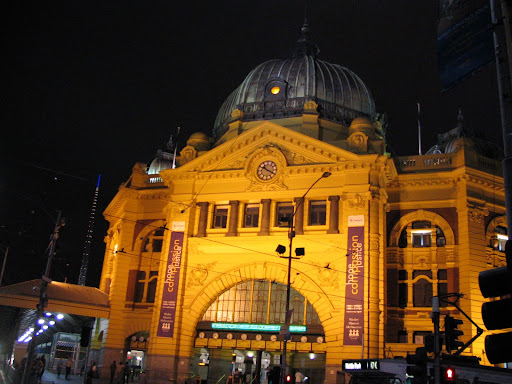
 Those Gardens I mentioned are indisputably the best in Australia and among the best in the world. The central Royal Botanic Gardens are right in the middle of Melbourne, on the Yarra River, and cover 87 acres. There are more Royal Gardens in greater Melbourne, covering 900 acres, and tons of other parks and garden collections, making Melbourne "the garden city." The central Royal gardens grouped according to the environment they emulate—Australian rain forest, “dry” rain forest,
Those Gardens I mentioned are indisputably the best in Australia and among the best in the world. The central Royal Botanic Gardens are right in the middle of Melbourne, on the Yarra River, and cover 87 acres. There are more Royal Gardens in greater Melbourne, covering 900 acres, and tons of other parks and garden collections, making Melbourne "the garden city." The central Royal gardens grouped according to the environment they emulate—Australian rain forest, “dry” rain forest,  I haven't taken many pictures of the gardens, not because they aren’t beautiful, but because every acre is so well landscaped that there’s a picture around every corner. Anyway,
I haven't taken many pictures of the gardens, not because they aren’t beautiful, but because every acre is so well landscaped that there’s a picture around every corner. Anyway,  Melbourne's trams are given a high priority on the road, since they're often packed full of people. Their tracks are in the middle of the road, and car lanes are outside. In some areas, cars can drive in tram lanes. But not in the Central Business District, where I go to school. This creates some strange road rules--such as Hook Turns. To turn left in the CBD, you need to get over to the right lane, wait at the side of the intersection, and when both lanes of traffic have finally stopped, you cross all lanes to turn right. Only in Melbourne.
Melbourne's trams are given a high priority on the road, since they're often packed full of people. Their tracks are in the middle of the road, and car lanes are outside. In some areas, cars can drive in tram lanes. But not in the Central Business District, where I go to school. This creates some strange road rules--such as Hook Turns. To turn left in the CBD, you need to get over to the right lane, wait at the side of the intersection, and when both lanes of traffic have finally stopped, you cross all lanes to turn right. Only in Melbourne.

